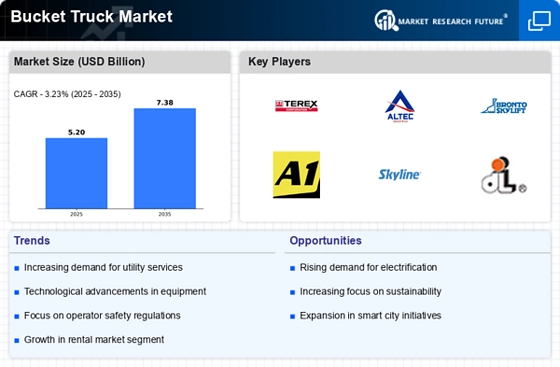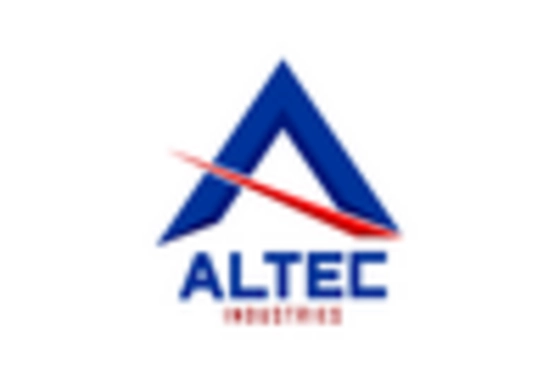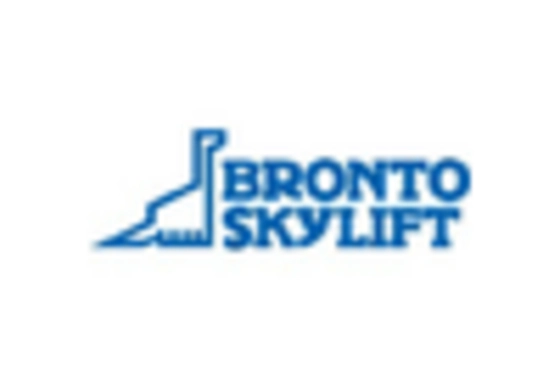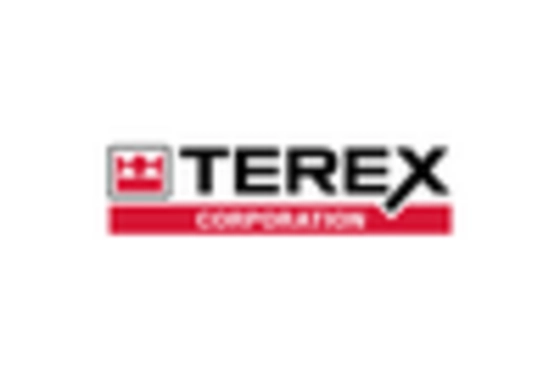Infrastructure Development Projects
Infrastructure development projects play a crucial role in shaping the Bucket Truck Market. As governments and private entities invest in upgrading and expanding infrastructure, the demand for bucket trucks rises correspondingly. These vehicles are essential for tasks such as installing streetlights, maintaining power lines, and conducting inspections on bridges and buildings. Recent reports indicate that infrastructure spending is expected to increase significantly, with many countries prioritizing projects that enhance public safety and accessibility. This surge in infrastructure initiatives creates a favorable environment for the Bucket Truck Market, as contractors and service providers seek reliable equipment to support their operations. The ongoing focus on modernizing infrastructure is likely to sustain demand for bucket trucks in the foreseeable future.
Technological Innovations in Equipment
Technological innovations are reshaping the Bucket Truck Market, as manufacturers integrate advanced features into their equipment. Innovations such as telematics, improved hydraulic systems, and enhanced safety mechanisms are becoming standard in new bucket truck models. These advancements not only improve operational efficiency but also enhance safety for operators working at heights. Market data indicates that the adoption of smart technologies in bucket trucks is on the rise, with a projected increase in sales of technologically advanced models. As companies seek to optimize their operations and reduce downtime, the demand for innovative bucket trucks is likely to grow. This trend suggests that the Bucket Truck Market will continue to evolve, driven by the need for more efficient and safer equipment.
Rising Demand in Renewable Energy Sector
The Bucket Truck Market is witnessing a surge in demand driven by the renewable energy sector. As countries commit to reducing carbon emissions and transitioning to sustainable energy sources, the installation and maintenance of renewable energy infrastructure, such as wind turbines and solar panels, become increasingly vital. Bucket trucks are essential for accessing these elevated structures safely and efficiently. Recent statistics indicate that investments in renewable energy are expected to grow substantially, leading to an increased need for specialized equipment like bucket trucks. This trend not only supports the growth of the Bucket Truck Market but also aligns with broader sustainability goals. As the renewable energy sector expands, the demand for bucket trucks tailored for these applications is likely to rise, presenting new opportunities for manufacturers and service providers.
Increased Demand for Aerial Work Platforms
The Bucket Truck Market experiences heightened demand for aerial work platforms, driven by the growing need for maintenance and repair in various sectors. Industries such as telecommunications, utilities, and construction increasingly rely on bucket trucks for efficient access to elevated work areas. According to recent data, the demand for aerial work platforms is projected to grow at a compound annual growth rate of approximately 5.5 percent over the next five years. This trend indicates a robust market for bucket trucks, as companies seek to enhance productivity and safety in their operations. The versatility of bucket trucks in handling diverse tasks, from tree trimming to electrical maintenance, further solidifies their position in the market. As urban areas expand, the necessity for reliable aerial access solutions becomes more pronounced, thereby propelling the growth of the Bucket Truck Market.
Regulatory Compliance and Safety Standards
The Bucket Truck Market is significantly influenced by stringent regulatory compliance and safety standards. Governments and regulatory bodies worldwide impose regulations to ensure the safe operation of aerial work platforms. These regulations often mandate regular inspections, maintenance, and operator training, which can drive demand for newer, compliant bucket trucks. As safety becomes a paramount concern, companies are increasingly investing in modern equipment that meets or exceeds these standards. The market data suggests that regions with stricter safety regulations tend to see a higher turnover of older bucket trucks, as businesses upgrade to meet compliance. This trend not only enhances worker safety but also stimulates growth within the Bucket Truck Market, as manufacturers innovate to produce safer and more efficient models.

















Leave a Comment